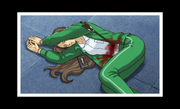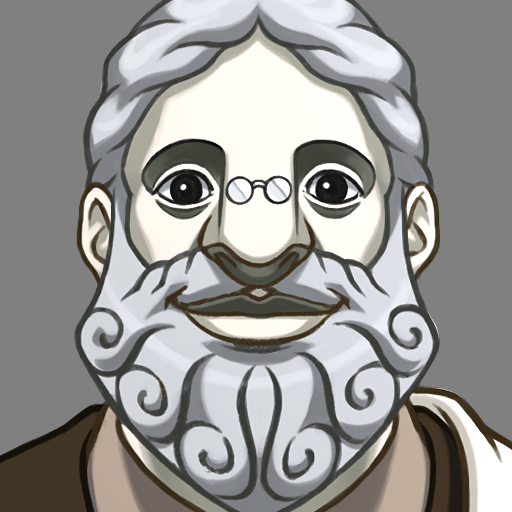No edit summary Tag: sourceedit |
Whitehorse24 (talk | contribs) No edit summary Tag: rte-source |
||
| Line 40: | Line 40: | ||
[[File:Therealmeans.png|thumb|The real Aristotle Means.]] |
[[File:Therealmeans.png|thumb|The real Aristotle Means.]] |
||
| − | Unfortunately for Means, Cykes, with help from [[Apollo Justice]], managed to deduce that he was the true culprit in the case. When confronted in court, Means dropped his friendly demeanor to show a much more aggressive and brutal side of himself, ruthlessly taking advantage of some of the earlier errors Cykes had committed, causing her to [[UR-1 Incident|dredge up old painful memories]] and doubt herself to the point of nearly costing her the case. However, following an intervention from Newman, O'Conner, Woods, Prosecutor [[Simon Blackquill]], and Justice, Cykes managed to recover and [[Revisualization|revisualize]] the facts, which led her to correctly deducing how Means had hidden the body. Knowing that he was finished, Means [[Breakdown|desperately attempted]] to sway the court to go easy on him, to no avail, and was finally arrested and incarcerated for his crimes. |
+ | Unfortunately for Means, Cykes, with help from [[Apollo Justice]], managed to deduce that he was the true culprit in the case. When confronted in court, Means dropped his friendly demeanor to show a much more aggressive and brutal side of himself, ruthlessly taking advantage of some of the earlier errors Cykes had committed, causing her to [[UR-1 Incident|dredge up old painful memories]] and doubt herself to the point of nearly costing her the case. However, following an intervention from Newman, O'Conner, Woods, Prosecutor [[Simon Blackquill]], and Justice, Cykes managed to recover and [[Revisualization|revisualize]] the facts, which led her to correctly deducing how Means had hidden the body and revealed that his staff is what caused the wound. Knowing that he was finished, Means [[Breakdown|desperately attempted]] to sway the court to go easy on him, to no avail, and was finally arrested and incarcerated for his crimes. |
==Personality== |
==Personality== |
||
Revision as of 18:52, 7 November 2016
| Aristotle Means |
Image Gallery | Sprite Gallery |
| Aristotle Means |
| How wonderful! So vigorous and vivacious. You just earned yourself a gold star. |
Aristotle Means was a teacher at Themis Legal Academy known for his belief that "the end justifies the means". As well as teaching the school's attorney course, Means was a formidable defense attorney in his own right. He was a witness in the murder of Constance Courte.
A clash of philosophies
| Aristotle Means |
| Here at our esteemed academy, we train our students to produce meaningful results. |

Themis Legal Academy.
Means was himself an alumnus of Themis Legal Academy and was the valedictorian for his graduating class, receiving a special notebook reserved for students of that honor. He went on to hold cases in court, frequently clashing with Constance Courte, who was also an alumna of Themis and valedictorian of her graduating class. Eventually, Means returned to Themis as a teacher in the defense attorney course, with Courte also joining the staff as a teacher in the judge course.
In the wake of the so-called "dark age of the law", an unspoken rift emerged between students and teachers; those who believed in finding the truth through honesty versus those who believed in obtaining victories by any means necessary, even those considered illegal. Means believed that the top priority for lawyers should be winning trials by any means necessary, while Courte felt that the duty of lawyers was to pursue the truth. This caused a rift among the students, with half the student body following Means and the other half following Courte. Means also began accepting bribes for grades, and would note the recipients in the notebook he had received upon graduating.
Murder of a colleague
- Main article: Turnabout Academy

Courte's corpse.
On October 22, 2027, Courte had received a monthly disciplinary report from her "snitch", Juniper Woods, as it had become clear that someone in the faculty was accepting monetary bribes in return for grades. The following day, Courte confronted Means on the stage where the school festival was to be held. Cornered, Means stabbed Courte with his staff and left her to bleed to death. Having read the details of Juniper Woods' mock trial script from a note on Courte's person, Means decided to frame Woods for his crime.
Means used two banners to mop up Courte's blood; one school banner and one Gavinners banner. He then brought the Gavinners banner to the art room three stories above in order to wipe it on the floor and create a bloodstain, thereby manufacturing a fake crime scene, before incinerating the banner. He then posed the body to resemble an unfinished Phoenix Wright statue that Robin Newman had begun to create by tying her hands behind her head and using his staff to mimic Wright's iconic "Objection!" pose. Using a cloth to disguise Courte's body and the finished Klavier Gavin statue, he left the body hidden until the next day.
On October 24, during the school's mock trial, Means was to give a customary introductory speech, which he had pre-recorded on this occasion so as to establish an alibi, with the speech itself lasting 10 minutes and 35 seconds. During this time, he took a Lady Justice statue, which had been reassembled "artistically" by Courte, and sent it down to the stage in a makeshift pouch using the school banner. Doing so intentionally, and loudly, smashed both the Lady Justice and Gavin statues, leading Wright and Athena Cykes to discover the body of Courte, cementing the professor's supposed alibi.
In the aftermath of his crime, he used the same tape on which his speech was recorded to fabricate evidence of a woman screaming "You're a goner", which was one of the lines in the mock trial, in the art room. He also deleted his speech, although he did this somewhat sloppily, leaving 10 minutes and 35 seconds of white noise on the tape. He then gave the tape to his student Hugh O’Conner, telling him to give it to the investigating attorneys. Finally, he planned to take up the defense of Woods himself in order to clear any suspicion or evidence against him, although Cykes was already heading the defense.

The real Aristotle Means.
Unfortunately for Means, Cykes, with help from Apollo Justice, managed to deduce that he was the true culprit in the case. When confronted in court, Means dropped his friendly demeanor to show a much more aggressive and brutal side of himself, ruthlessly taking advantage of some of the earlier errors Cykes had committed, causing her to dredge up old painful memories and doubt herself to the point of nearly costing her the case. However, following an intervention from Newman, O'Conner, Woods, Prosecutor Simon Blackquill, and Justice, Cykes managed to recover and revisualize the facts, which led her to correctly deducing how Means had hidden the body and revealed that his staff is what caused the wound. Knowing that he was finished, Means desperately attempted to sway the court to go easy on him, to no avail, and was finally arrested and incarcerated for his crimes.
Personality
| Aristotle Means |
| Professor Means always says what he means and means what he says by all means! |

Mugshot.
At first glance, Means appeared to be a benevolent teacher who is genuinely interested in seeing justice prevail, although Cykes found his policy of "the end justifies the means" somewhat disturbing. He possessed a large, somewhat unnerving grin, which he tended to flash when disagreeing with someone.
In actuality, his benevolence was a façade, as he accepted bribes for good grades and was willing to falsify evidence to secure victory for himself in court. He also viewed the "dark age of the law" as a "beautiful" boon to the legal profession, since it meant that his philosophy had become a matter of routine. His friendly façade dropped when Cykes began to corner him in court, whereupon he became belligerent, condescending, and aggressive.
When found guilty of his crime, Means desperately and pitifully tried to barter with the court for more lenient alternatives to admitting his guilt, such as bathroom detail, retaking the bar exam, a 30% salary cut, and dismissal.
Name
- His Japanese given name comes from the word "shinjiru" (信じる), which means "to believe", and his surname translates as "one road". His full name therefore literally means "believe in one road", referring to his single-minded belief in his "the end justifies the means" philosophy. The kanji in his name could also be read as "one road, two truths".
- His English given name, "Aristotle", comes from the ancient Greek philosopher of the same name. This was likely chosen to fit with his physical appearance, which is heavily inspired by ancient Greek and Roman motifs. In addition, the historical Aristotle was well-known for his belief that everything people do is a means to an end (e.g., going grocery shopping is a means toward the end of eating well), with happiness as the ultimate aim of all human activities. Means' philosophy that the "end justifies the means" is an absolutist spin on Aristotle's beliefs.
- "Means", his English surname, is a reference to his philosophy of "the ends justify the means".
Development
- Means' design is based around ancient Greek or Roman motifs, with his skin tone and hair color intended to call to mind a stone statue from that time period. His hair and facial hair styles are stereotypical of that era, as are his robes, while the "Mouth of Truth" badge on his robes is reminiscent of the masks used in the theatres of ancient Greece, albeit with measuring scales for eyes, which are traditionally used to symbolize law. This mask/statue theme is also apparent when Means drops his friendly façade, as a vein then becomes visible above his right eye that resembles a crack.[1]
- In line with his "Classical Greek/Roman" theme, Means' post-transformation mohawk mimics the plumes often sported atop the Corinthian helmets worn by Greek hoplite warriors, including those from the city-state of Sparta.[1]
- One of Means' animations, which shows him pointing upward with his right hand, then doing the "OK" hand gesture, may be a reference to the famous fresco The School of Athens by Italian Renaissance artist Raphael, which depicts a multitude of ancient Greek philosophers in a room together. In the center of the painting are two men, who are believed to to represent Plato and Aristotle, who are depicted performing different hand gestures that are commonly interpreted to represent their contrasting philosophies. Interestingly, Means' "pointing upward" hand gesture actually resembles that of Plato, as Aristotle is instead depicted holding out his hand out towards the ground.
- Perhaps to fit with his statue-like appearance, Means was originally intended to be the advisor for the school's fine arts club.[1]
- One early design for Means included a snake draped over his shoulder that would rear up and hiss when Means was angry.[1]
- Another scrapped idea was for Phoenix Wright to initially mistake Means for a statue at the school, only to be shocked when it started to move by itself.[1]
References
- ↑ 1.0 1.1 1.2 1.3 1.4 (2015). "The Art of Phoenix Wright: Ace Attorney - Dual Destinies -". UDON. ISBN 978-1927925447.
